Winter Cycling Training Guide: 11 Ways to Become a Faster Cyclist
A successful spring and summer riding season hinges mainly on one thing—your winter cycling training plan. The type of work you put in now will pay massive dividends in the future.
Did you catch that? It’s all about the type of work you put in—not how much work you put in. For many cyclists, winter cycling means doubling down on long-duration endurance ride with high-volume base training. But most of us don’t have that amount of time. For cyclists that want the most efficient and effective way to get faster, winter means an entirely different type of training.
To discover the type of training that’s right for you this winter, follow along as I tackle some of the most commonly asked winter cycling training questions. It’s all covered here—everything you need to know to have your best winter indoor training season yet!
Winter Cycling Training Plan Guide Contents
- How do I set smart winter training goals?
- Should I focus on base training this winter?
- How are most cyclists doing base training wrong?
- How do I create a winter cycling training plan that’s right for me?
- What approach to base training should I take?
- How do I mentally prepare myself for a successful race season?
- How do I optimize my indoor training environment?
- What should I wear — and not wear — when training indoors?
- How do I identify which workouts I should do outside?
- What should I wear when training outdoors during winter?
- How do I stay motivated to train indoors?
1. How do I set smart winter cycling training goals?
Setting goals is a big part of cycling in general. How much thought and strategy you put into the goal-setting process can forecast how your season will turn out. That might sound bold, but there’s some science behind that statement. In a study done by the Dominican University on goals research, they found that people are a whopping 33 percent more likely to complete their goals if they write them down, create an action plan and share them with a friend.
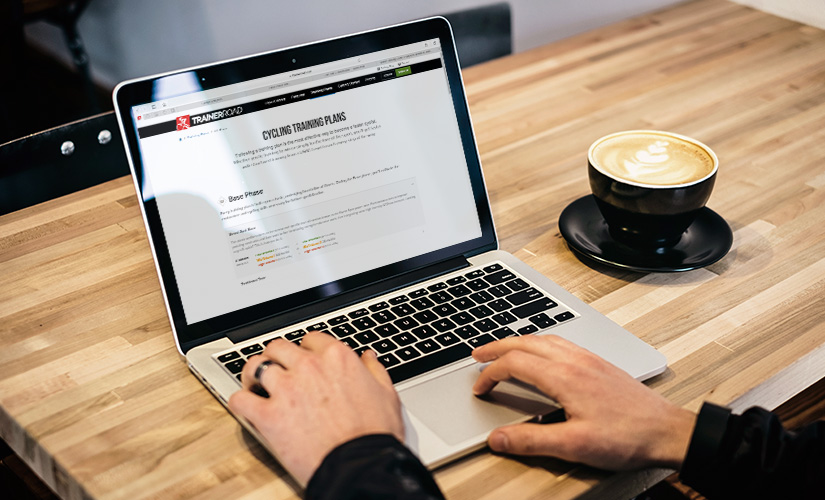
Now that you know the science supporting setting goals, let’s talk about the art of it. There are three key characteristics of a well-thought-out cycling goal: measurable, specific, and attainable. To make cycling goals that have each of those qualities, follow these steps:
Step #1: Consult Your Training Log
To set measurable goals, it’s best to know where you’re coming from. That said, take the time to revisit your training log to look at your last year’s performance before you start your winter training. Be honest with yourself. Analyze the aspects where you were weak or how you came up short. This first step will vary depending on if you train with power or not.
If I don’t train with power, how do I analyze my past performance?
If you don’t train with power, make a note of the perceived exertion and shortcomings of your past performances. Did you get dropped on all the climbs? Could you not hang on the flats? Was your sprint weak? The goal is to study the outcomes of your past events in their entirety. Also, reference times, finish placing, or particular parts of a course that gave you trouble.
If I train with power, how do I analyze my past performance?
If you train with power, this step is more clearcut. One way to analyze is to simply view your functional threshold power (FTP) improvements. Another way is to use the Personal Records chart to look at your power profile and focus on your power output over specific durations. Did you excel at sprint power or extended 10-minute efforts? By looking at these key metrics from your previous season, you’ll get a feel for the strengths and limiters of your performance.
Step #2: Pick a Goal Event
With the limiters you identified and your last year’s performance in mind, decide on your goal for the new year. That could be anything from a particular event to a personal fitness goal. If it’s an event, you can select other similar events that will help prepare you for your goal. The key when choosing supplementary events is to look for opportunities to build a specific type of fitness, or maybe even your confidence. The closer you are to your goal event, the more closely your supplementary events should replicate its demands.
Step #3: Create a Realistic Winter Cycling Training Plan
I’ll dive into the core components of creating a winter training plan later in this guide, but the point I want to make now is this: you can’t force more training hours. Your schedule is your schedule. The best you can do is be realistic about the number of hours you can commit to training and how much training your body can recover from, then make a solid game plan with that information in mind. Planning ahead will help you reach your goals, and starting your training sooner will allow you to develop deep aerobic fitness.
Key Takeaway
Setting measurable, specific, and attainable cycling goals is a multi-step process. The time and effort spent are exceptionally worthwhile.
Action Item
Reviewing your ride data is especially important and easy to do on your career page. Along with your training and event notes, write your goals down to make them stick. You could add them as a Notes annotation on your Calendar.
2. Should I focus on base training this winter?
In the cycling world, winter cycling training and base training often go hand in hand. But the truth is, the two are not synonymous. Although commonly done in late fall and early winter, base training is not tied to a specific time of year—it’s connected to your goal event.
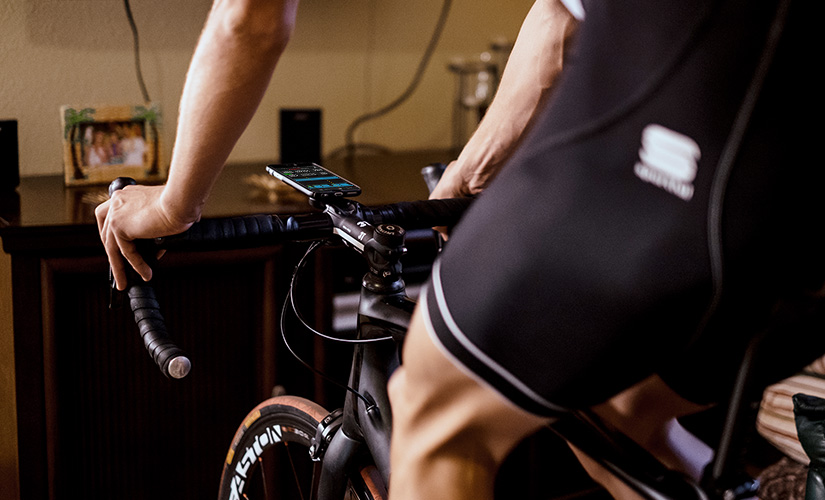
Often during this time of year, you’ll see cyclists go out for a group ride. One rider might decide to go really hard and blast away from the group. When this happens, the rest of the group will get frustrated and make remarks like, “Hey, we’re base training. You shouldn’t be doing that kind of stuff yet.”
A blanket statement like that isn’t appropriate unless you know the training schedule of every cyclist you ride with. Why? Who’s to say the rider who broke away from the group hasn’t already completed their base training? Maybe they’re only a few weeks away from an A race, so they’re ramping things up.
Key Takeaway
Just because it’s winter doesn’t mean every rider is—or needs to be—base training. Your winter cycling training should be dependent on the demands of your goal event.
Action Item
To determine the type of training you should be doing this winter, use Plan Builder. Plan Builder will use your goal event, experience, and available training time to ensure you get the type of training you need at the right time.
3. How are most cyclists doing their base training wrong?
It’s traditional thinking that during winter, when you’re doing base training, you should be doing extremely long rides can at a very low intensity. This is the correct intention if you have enough time to bring about the adaptations you want. But there’s a catch. The majority of cyclists are time-crunched, and they can’t do as long of rides as they wish. That’s a big issue.
What often happens during winter base training is that a cyclist will get in the habit of riding very easily and at a low intensity. But, to their detriment, they actually don’t have enough time to get the type of gains they’re chasing. To grow your fitness, you have to provide a stimulus that outpaces what your body can do right now.
When a cyclist rides easy for an hour or two, which they’re likely already capable of doing, they’re not creating a stimulus for change. However, when they ride for 4 or 5 hours at a relatively easy pace, that usually exceeds what they’re used to. If they don’t have those long durations to ride on a regular basis, they have to exceed their capabilities with intensity or, again, they’re not achieving a stimulus that later brings with it an increase in fitness.
If you want to see gains from riding at a low intensity, you have to ride a lot. This kind of volume requires a cyclist to dedicate around 12-20 hours a week to training. If you don’t have that kind of time, which most cyclists don’t, then it’s best to commit to another base-conditioning approach (I’ll discuss this more below).
Key Takeaway
Many cyclists are doing their winter base training at low intensity with good intentions. The trouble is, they often don’t have the circumstances in their life that allow them to ride as many hours as they need to achieve real fitness gains.
Action Item
Figure out how many hours you can realistically dedicate to training this winter, keeping how much stress your body can take in mind. Once you have your number, you can confidently decide the approach to base training you should take.
4. How do I create a winter cycling training plan that’s right for me?
Your winter training plan should be created based on the demands of your goal event, also known as an A-priority event. After you’ve determined what and when your goal event is, the next step is to pick all the B- and C-priority events that you’ll do between now and then to help you prepare for your A race.
Each type of priority race has a specific purpose and should fit strategically into your overall training plan. Here’s how to categorize your future races, which is the first step in laying out a successful upcoming race season:
A Events
These are high-priority, key events that should inspire all your training. The performance outcomes of your A races will likely serve as a measure of your entire season’s success. You’ll likely only have one or two of these races in a season. As you get deeper into your training, you should taper your training for these events.
C Events (aka training races)
These events are focused more on targeting a specific aspect of your fitness or performance than they are on winning. For example, maybe you want to practice holding 90% of your race pace during a C-priority time trial or triathlon. Or, maybe you want to take a few flyers during a criterium or attack some climbs during a road race. These are all situations where your results aren’t your highest priority—your training is. You shouldn’t be afraid to “fail” during events as they are an essential learning experience. With C events, there’s no tapering or extra rest needed to work into your winter cycling training program to prepare for them.
B Events
These events fall somewhere in between and serve your training on a few levels. One, they’ll show you if your training is moving you toward your goals at the right rate. Two, they can familiarize you with the exact types of demands you’ll face during your highest priority events. And three, they can give you an idea of how you’ll perform when you’re not particularly fresh or optimally fit. You won’t taper for these events in the same way you will for an A race, if you taper at all.
When you step from your C to B to A events, they should get increasingly more specific to your goals. Keep this in mind as you go into your next step of training planning, which is laying out your season into three key phases.
The goal for any type of cycling training should be to establish a solid foundation of fitness, build upon that fitness, then fine-tune your fitness. With Plan Builder, every plan uses these three phases. We call them the Base, Build, and Speciality Phases.
Progressive Training
Progressive training begins by building general base fitness, then layers on more specific work, eventually bringing your overall fitness to a well-timed peak. This is the Base, Build, and Speciality cycle. Of the three key training phases, the Base Phase is the longest. In most cases, you want to dedicate 12 weeks to base training. If you don’t have 12 weeks, eight weeks is a safe minimum. Anything less than eight weeks isn’t very productive. As for your Build and Speciality Phases, it’s ideal to dedicate eight weeks of training to each phase.
Key Takeaway
Your training should get more specific as your races do. When creating your cycling training plan, you should prioritize your races then work them into three incrementally progressive phases to help prepare for your goal event.
Action Item
Make a list of your event dates, then categorize them into three buckets: your A, B, and C events. Next, add those races to your Calendar. Now, when you use Plan Builder, you can import these races into your training plan automatically. Plan Builder will adjust your training around your events.
5. What approach to winter base training should I take?
Variables like your cycling experience level, schedule, and type of event you’re training for determine your approach to base training. Take a look at these three rider-type scenarios to help you decide which approach works best for you:
 Triathlete
Triathlete
Experience: Moderate
Availability: Minimal time to train (6 hours/week on the bike)
Recommended base plan: Low-Volume Full Distance Triathlon Base plan
In this scenario, the rider has a family and a full-time job. For the limited time they have, this athlete has to make the most of it. While travel time for swimming can lift weekly training time, a full-distance “finisher” — someone who’s not necessarily looking to set PR’s or reach the podium — can do so on as little as 12 hours/week, with 5-6 hours dedicated to the bike
If you see yourself in this scenario, a moderately experienced triathlete who’s time-crunched with less than 8 hours/week to train on the bike, TrainerRoad’s Plan Builder is a good place to start. Just input your available training time, experience, and goal event. Below is an example of how Plan Builder will create your winter cycling plan.
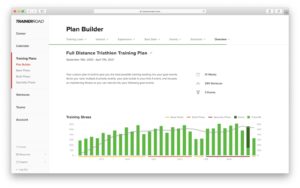
Here, Plan Builder has created a Low-Volume Full Distance Triathlon plan with plenty of base training to grow that aerobic engine. These plans favor building a higher FTP instead of only logging long hours of low-end endurance. As the plan progresses you’ll address more specific race day fitness with Build and Speciality Phases.
 Enthusiast
Enthusiast
Experience: Beginner
Availability: A lot of free time to train (13 hours/week)
Recommended base plan: Sweet Spot Base
This cyclist has no real limits on the amount of time they can dedicate to training. While this situation is ideal, it often leads athletes into the “more is more” training philosophy. In turn, the chances of injury, illness, or exhaustion increase.
Many new and less-experienced cyclists fail to recognize that the body responds most favorably to gradual, progressive amounts of stress. Sudden heaps of high-level intensity, lots of time in the saddle, or a combination of the two can overwhelm quickly. At the same time, the challenge to their current ability has to be substantial enough to impact their performance capabilities
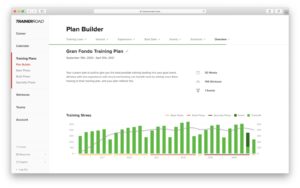
In this example, the beginner cyclist used Plan Builder to train for a Gran Fondo. With this winter training plan, they will be on the bike five times a week, starting with TrainerRoad’s Sweet Spot Base plan. It includes three to six interval workouts a week to strike an important balance between doing too much and not doing enough. An additional increase in workload beyond what Sweet Spot Base plans outline is often unnecessary, counterproductive, and can derail long-term improvement for a new cyclist.
 Road Racer
Road Racer
Experience: Years of Training
Availability: Moderate amount of time to train (8-10 hours/week)
Recommended base plan: Traditional Base or Sweet Spot Base. But across the board, Sweet Spot Base is recommended more often.
Here is a reasonably experienced athlete with around 8-10 hours/week to train. This type of rider can benefit from doing either the Traditional Base or Sweet Spot Base. To decide, it’s mostly a question of duration over intensity. Consider the pros and cons of each approach:
Traditional Base applies high doses of low intensity to help professional athletes or those recovering from an injury who want to avoid high-intensity intervals. This approach can be useful to these types of serious ridersbutonly if you have a lot of time
Traditional Base requires the sort of rider who can tolerate long, mind-numbing hours of steadily turning the pedals in pursuit of slowly earned, incremental aerobic fitness gains. It’s no surprise a mindset that accepts monotonous workouts and training doldrums well is required.
The type of gains you can achieve through Traditional Base are useful to a limited number of athletes, such as professional cyclists and RAAM participants. These types of riders know that with this approach to training, gains come slowly—if they come at all—since they depend on devoting a lot of time to riding easily.
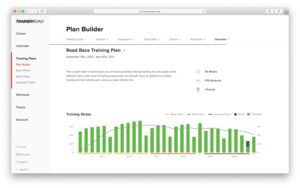
An experienced rider with 10 hours to train would benefit most from Sweet Spot Base. They could go with a high-volume training plan—as long as they fuel well and recover enough to keep consistent. Otherwise, a mid-volume plan would be best.
In contrast to Traditional Base, Sweet Spot Base is more all-inclusive and can build fitness in relatively less time. The workouts are substantially more varied, interesting, challenging in numerous ways, and are comparatively entertaining. Just two or three of these workouts each week can bring measurable, inspiring fitness gains for all types of riders with varied training time limitations. Higher-volume riders who can train more frequently (4-6 times per week), and want to include more traditional base miles, could use Mid-Volume Sweet Spot Base then add in just enough extra endurance riding to further their gains a little.
Opposite of Traditional Base workouts, Sweet Spot Base workouts require focus, concentration, and often enough, a willingness to endure more intense—but shorter—durations of riding discomfort.
If you commit to Sweet Spot or Traditional Base, you will have desirable training outcomes. However, we recommend Sweet Spot Base for the majority of cyclists. The good news is that now you can have a training plan that actively responds to your strengths, limiters, and scheduling needs with Adaptive Training. Adaptive Training is designed to help you train more effectively by updating your plan each day in response to your performance.
Key Takeaway
Traditional Base assumes you have almost unlimited time to ride at a slow pace this winter. Whereas Sweet Spot Base assumes you have a limited schedule like most non-professional cyclists, which allows you to compensate for the lack of duration with an increase in intensity. That said, time is not the only factor when deciding on your base training plan. You must also consider your experience, the type of rider you are, and the cycling event you’re preparing for.
Action Item
First, look at your winter schedule and decide on a realistic number of training hours you can commit to each week. Next, evaluate your most important events for the year and ask whether or not you’d like to get fit quicker for your lower-priority events. Finally, take into account your training history/experience, tolerance for patience, and overall interest in working out. Once you’ve considered all these things, you’ll be positioned to make a decision on the direction to take with your base training.
6. How do I mentally prepare myself for a successful race season?
A strong, focused, and most importantly, goal-oriented mindset is one aspect of winter cycling training that can help cyclists achieve consistency and success. If you’re like the majority of other cyclists base training this winter, your mindset should be concentrated on one thing: patience.
It can be tough to put in hours of hard work without the reward of competition. Remember, this is your time to progress and build a foundation for a new level of fitness you’ve never achieved before.
Building your aerobic endurance, speed, and technique all takes time. The important thing is that you use this time to really focus on those fundamentals. Make your efforts really count because once the race season is here, you’ve got the fitness you’ve got.
Key Takeaway
Base work is not exciting, glamorous, or sexy — but it’s a requisite to a successful season.
Action Item
If you ever experience a lack of motivation during winter base training, revisit your cycling goals and the plan you have for achieving them. This exercise will remind you that if you’re following your plan, success is inevitable.
7. How do I optimize my indoor winter training setup?
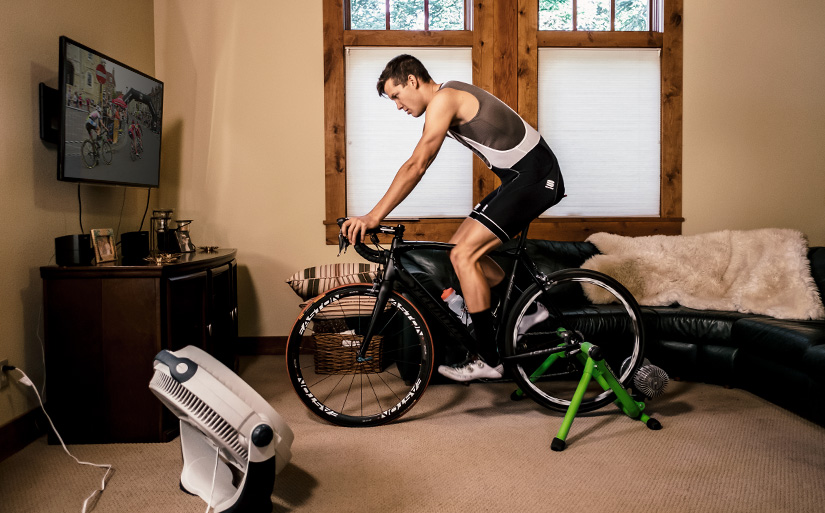
Indoor trainers are a great substitute for inclement winter weather, but more importantly, they’re the best way to get into a structured workout. To have long-term success with indoor winter cycling training, the right tools are imperative. There are two words that should describe your indoor-training environment: comfortable and accessible. The important thing is that it can’t be, or feel like, a ton of work to get on the bike. You must eliminate as many obstacles as possible. Is your indoor training setup crowded, noisy, too bright, too cold, or too warm? These are all things you should address.
Of all the aspects of your indoor training setup, cooling is probably the single biggest issue because you’re not moving. Especially as you get into higher intensity workouts, it can be hugely limiting. This is one reason cyclists might think they have an indoor FTP and an outdoor FTP. But really, it just boils down to focus and cooling. The vast majority of cooling comes from evaporative cooling rather than room temperature, so a good fan is essential. Place one at the base of your bike and aim it at your body, or put it front in center on its high setting and you’ll be good to go.
How can I make my winter trainer sessions more successful?
- Stay psychologically and physically motivated by integrating some entertainment into your training environment. Music, TV, Netflix are all great options. Heck, our CEO even plays video games on some of his longer workouts!
- Train with your friends in Group Workout.
- Enhance your indoor training experience to best represent how you’d ride outdoors by using a front block or riser to make your front axel even with your back axel.
- Mimic the head angle and positioning that you’ll experience on the road by positioning your display(s) appropriately; not too high, not too low.
- Minimize discomfort during extended rides by adjusting your pelvic posture, and by using your saddle shape effectively.
- Account for the lack of side to side movement by performing standing breaks throughout your workouts.
- Keep excess sweat from hitting the bike by using a towel or bike protector.
- Control the build-up of corrosion under your bar tape by periodically inspecting your handlebars.
How do I adjust my indoor-training setup the closer I get to my goal event?
Eventually, you’re going to want to make sure your indoor-training environment is setup so it’s not as foreign to your goal event’s racing environment. When you’re in the Base and Build phases of your training you don’t need to go to great lengths to replicate your outdoor racing environment. You will be too far out for any adaptations you incur to stick around throughout the rest of your training.
The Speciality Phase is when you can start making adjustments to your indoor-training environment. For example, if you know that you’re going to be racing in Hawaii, invest in a humidifier to make your indoor-training space more humid.
Key Takeaway
Eliminate everything in your indoor-training environment that might deter you from getting on the bike to do something that’s potentially unpleasant.
Action Item
If you can, have a dedicated bike for your indoor training. This will help reduce the number of obstacles you face when preparing for a workout. Even if it’s an old bike, it works. The only critical variable is that your dedicated indoor-training bike fits identical to the bike your ride outdoors. Note: this tip is purely for motivation. It’s not to save your bike.
8. What should I wear — and not wear — when training indoors?
What you should wear when training indoors really comes back to cooling. You should be wearing as little as possible. And of the items you do wear, they should be your best, most comfortable pieces.
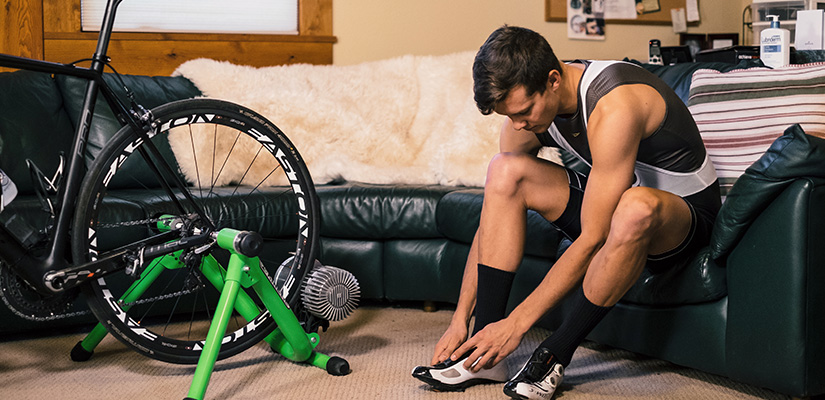
It’s very common for cyclists to leave their old cycling kit (worn-out jerseys and bibs) for the trainer. In reality, this couldn’t be further from the best practice. When you’re outdoors, mostly because you’re in and out of the saddle and moving more, it’s a little more forgiving if you have an old chamois. But indoors, because you’re sitting in the same position for your entire workout, it’s best to wear the good stuff. You don’t want to set yourself up to get a saddlesore, rawness, or something worse.
There’s also something to be said for looking good. You can gain a little motivation from putting on that fancy race kit. If you look better, you feel better and you might even work a little harder.
Key Takeaway
Wear your best, most comfortable gear when training indoors. After a long-duration workout on your trainer, your body will be glad you did.
Action Item
Separate, or get rid of, old cycling kits so you’re less likely to make the mistake of grabbing it before an indoor workout.
Bonus Tip
You won’t need to worry about this in base training, but for the sake of looking ahead keep one thing in mind. As you near your race day, consider wearing your aero helmet or wearing a skinsuit on the trainer once or twice. The controlled environment of the trainer is a great opportunity to work through details just before your goal event.
9. How do I identify which workouts I should do outside?
When performing your workouts outside during winter, be strategic. If the workout is specific and intense, take those two qualities as a sign that your workout is best done inside. The opposite side of that is quantity. When the weather cooperates, you can take your training outdoors with Outside Workouts by loading the workout on your Garmin or Wahoo device.
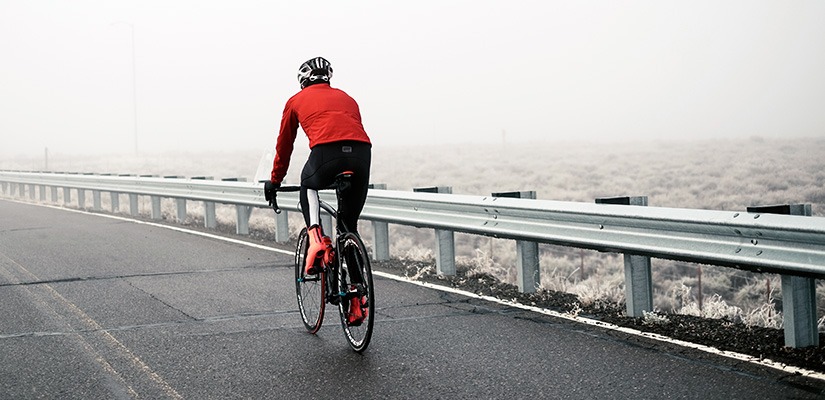
If you’re following a properly structured training plan, your weeks should follow a consistent pattern. For weekdays you should have your shorter, more intense, structure-workouts. Then on the weekends, you should have longer rides that have little fluctuation and specificity. When these types of workouts are prescribed, consider them an opportunity to do your workout outdoors.
Key Takeaway
If a workout looks really specific with a lot of different intervals and rest periods, you’re better off doing it indoors. This will help you focus on the quality of your workout.
Action Item
Look at your workouts the day before you’re scheduled to do them. Doing this will allow you to plan ahead with your training. That alone has its own added benefits.
10. What’s the best gear to wear when training outdoors during winter?
There are many cyclists who tend to think they need that really expensive jacket or they need a full set of bib tights. But, in almost every single situation where you’d really need a massive jacket and bib tights, it’s a sure sign that you would probably get more benefit from training indoors.
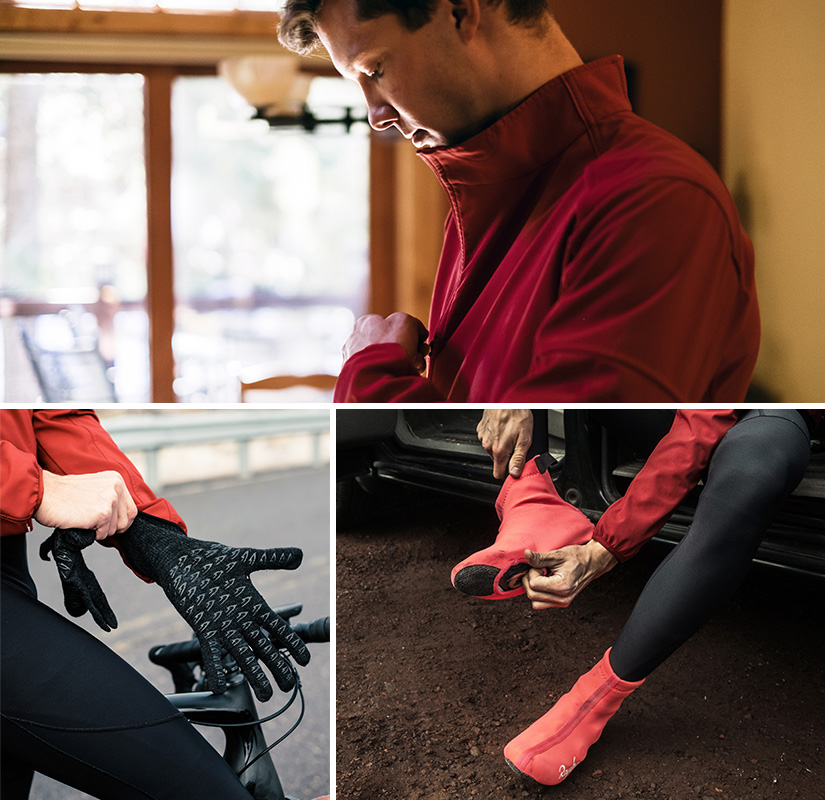
If the cold weather isn’t too taxing and you want to take a workout outside, layers are your best friend. Leg warmers, arm warmers, and a good vest are the best for managing the cold. Also, consider getting a thin scarf to bunch around your neck and shoe covers. With shoe covers, look for a pair that provides insulation and shields your feet from the elements. In my opinion, the thin latex shoe covers that slip over the feet are the best as they don’t absorb moisture.
For the riders who insist on riding in shorts, knee warmers are a must if it’s below 50 degrees. There’s one major reason for this. There’s not a whole lot of circulation that takes place in the joint capsule. This is the opposite of muscles where there’s plenty of blood flow and heat. But in the joints, where circulation isn’t great and lubrication is necessary, protection is key. Otherwise, your joints will suffer in the cold.
Key Takeaway
If you step outside the door and you’re already warm, you’re overdressed. You should be a little cold starting your ride. If you step outside with a large jacket on and you’re freezing, you should probably opt to do your workout indoors.
Action Item
Make time for more gradual warm-ups. It doesn’t matter how warmly you dress when you train outdoors and it’s cold you don’t want to dive right into training. Your whole asthmatic response will become totally exacerbated.
11. How do I stay motivated to train indoors?
I’ve already covered several tips on how to stay motivated to train indoors — including how to set actionable cycling goals, create a comfortable indoor training environment, reduce obstacles in your training journey, and what to wear to feel good when training indoors. There’s just one more training component I haven’t addressed yet: workout structure.
Indoor training has long been typecast as boring. The natural conclusion is that we need to make it feel like we’re riding outside to be entertained. Many cyclists like to use forms of entertainment to keep their minds occupied, but the real secret to achieving workouts that seem to fly by is having benchmarks you have to hit.
When you give yourself a specific goal during each workout and interval — and actively measure your performance in relation to that goal — you create an engaging indoor-training experience. That’s how you make your indoor workouts more enjoyable and motivating. At TrainerRoad, we get this. In fact, it’s one of the main reasons objectives and key milestones based are listed with every workout.
Key Takeaway
If you want the time on the trainer to pass quickly, set goals for your workouts, and create plans for achieving those goals.
Action Item
Before each workout write down exactly what you want to accomplish during it. Every workout, even if it’s a recovery workout, should have an interval structure with prescribed interval intensities and durations. If you’re not sure how to structure your workout with the appropriate type of intervals, use a training tool like TrainerRoad. We handle all those workout details for you, as well as track your performance in real-time.
More on Getting Started With TrainerRoad
For more cycling training knowledge, listen to Ask a Cycling Coach — the only podcast dedicated to making you a faster cyclist. New episodes are released weekly.
